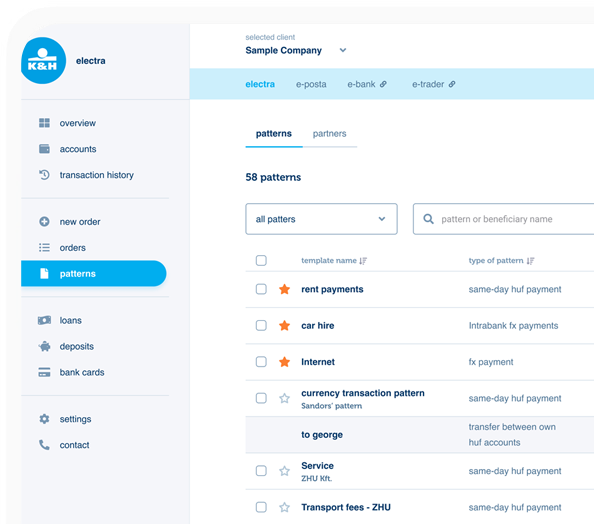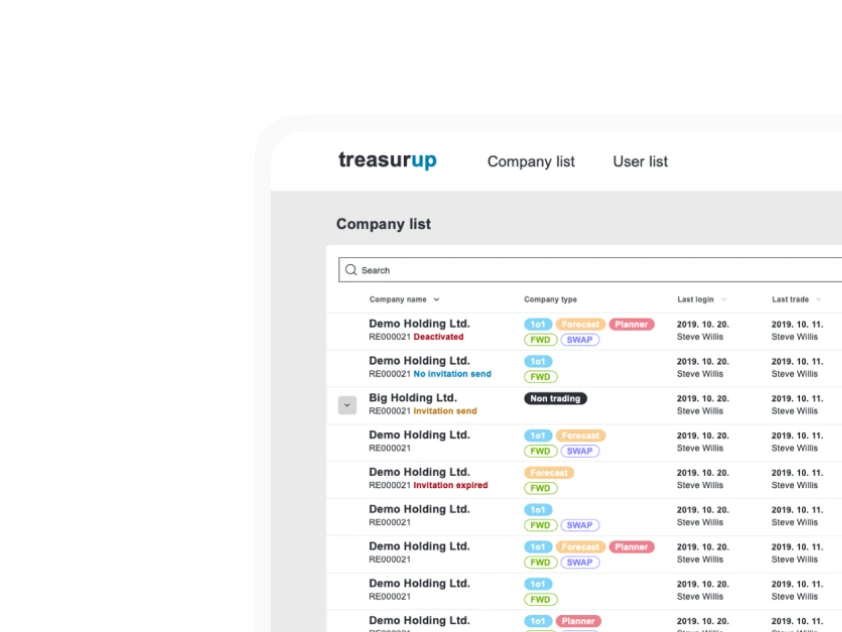The Revolution of Invisible Money: How the Stablecoin-Based Financial Infrastructure is Being Built
The Amsterdam Fintech Event is one of Europe's most important financial innovation hubs, where traditional banks, emerging fintechs, and startups with bold visions meet. This year, the event focused on tangible, market-ready solutions, and the Ergomania team was on-site to follow the developments. The theme of progress in the stablecoin ecosystem was a strong presence this year as the technology has moved from the experimental lab phase straight into the budgets of corporate business units. At a panel presentation segment and following discussion, experts in the field spoke not of theoretical futures, but of solutions that are already operational and rebuilding the rails of money movement.
The tone of the conversation was set by dramatic acceleration. In the last 12 to 18 months, the adoption of stablecoins has begun to grow exponentially, catalyzed by two main factors: the maturation of the regulatory environment and market validations like Stripe's billion-dollar-plus acquisition of Bridge. As Clarisse Hagege, founder of the API-based wallet infrastructure company Dfns, put it: "The RFPs – Requests for Proposal – have moved from the innovation teams to the business teams. This is great because it shows we've passed the initial lab phase." This sentence summarizes the market sentiment: stablecoins are no longer just an interesting technology but a business tool that can solve real, pressing problems.
 Panel at the Amsterdam Fintech Event 2025
Panel at the Amsterdam Fintech Event 2025From Regulated Value to Capital-Efficient Settlement
The participants outlined a complete, multi-layered financial infrastructure built on stablecoins. This system does not aim to replace existing solutions but rather to complement and enhance their efficiency. The solutions presented cover a full end-to-end value chain, from the value created on-chain to its secure management and global movement.
Every financial system is founded on a reliable, stable asset. Gaston Hendrik, co-founder of Quantoz, pointedly highlighted the reason for past failures: "We had many pilot projects with 'play money,' and these projects ultimately failed. When we went to the CFO, he asked, 'Where is the real money on the blockchain?'" His company, a licensed e-money institution in the Netherlands, fills this exact gap by issuing regulated euro and dollar tokens. Regulation (like Europe's MiCA) provides certainty to investors and eliminates counterparty risk. Quantoz's partnership with Visa, under which it will become a card issuer, perfectly demonstrates how a bridge is being built between DeFi (Decentralized Finance) and TradFi (Traditional Finance), providing real-world spending power for tokenized value.
Regulated, Programmable Money
The keyword here is "regulated," which elevates the technology from the experimental phase into the world of institutional finance. Quantoz operates as a licensed e-money institution under the supervision of the Dutch Central Bank and works with tier 1 banks to manage its reserves. This legal and operational framework guarantees that for every single token a corresponding amount of fiat currency is held in secure custody in the real world. This is the fundamental difference compared to earlier, unregulated stablecoins, whose counterparty and operational risks corporate treasurers simply could not take on. The regulated status enables the issuance of multi-currency tokens (euro and dollar) and the flexible application of both open-loop (freely tradable on secondary markets) and closed-loop (usable only within a specific ecosystem) models, according to client needs.
Besides regulation, the other revolutionary capability is programmability. Tokenized money is not just a digital ledger entry; it carries intelligent logic within it. This opens the door to innovations like purpose-bound money, which can revolutionize aid and subsidy systems. Hendrik's example of creating solutions for the United Nations (UN) where aid money can only be spent in a specific refugee camp on designated products is an excellent illustration. This capability also holds immense potential for corporate treasury operations: a company could issue funds that automatically execute payments only to authorized suppliers or can only be used against a specific project's budget, eliminating manual control processes and the possibility of misuse. This programmable logic is what makes stablecoins much more than a simple payment method: they are a precision financial instrument.
 The rails in between: connecting stablecoins to the world's instant payment systems
The rails in between: connecting stablecoins to the world's instant payment systemsThe Rails That Connect
Value on-chain is isolated on its own. The real breakthrough comes when this value can move seamlessly between the blockchain and the traditional financial world. Shah Ramezani, founder of Noah, described his company as "the rails in between." Noah is not a wallet or an exchange, but the network that connects stablecoins to the world's instant payment systems. "We enable instant money movement for stablecoins," he said, highlighting that this layer solves the on-ramp and off-ramp problem (converting fiat currency to crypto and vice versa). In developing markets, this means "access to the dollar," a fundamental user need due to local currency instability. As Ramezani explained, "Many people in these markets are poor because the money they save loses its value too quickly." Noah removes the burden of multi-jurisdictional bank partnerships and complex compliance procedures from fintechs, allowing them to focus on their core business.
These rails in between are actually the next logical step in financial globalization. Ramezani used the analogy of Voice over IP (VoIP): just as voice transmission over the internet protocol freed communication from the constraints of traditional telecommunication networks, money movement is breaking free from the correspondent banking system. Noah provides global reach through a single API integration, radically lowering the barrier to entry for a fintech in Africa or Latin America. Instead of having to establish separate banking relationships and comply with local regulations in each country – an almost impossible mission – they can connect to the global financial system through a single point. This model allows their users to deposit in their local currency (e.g., via Pix in Brazil), have the amount instantly converted to a dollar-based stablecoin in the background, and then have the payout occur again in a local currency in another country, minimizing currency risk and transaction time.
Math in Service of Capital
"Immediacy is not always cheap," noted Khalid Al Jaaidi, founder of Paygrid. The gross settlement of cross-border payments is extremely capital-intensive. Paygrid acts as a "math layer" on top of this problem, applying a multilateral netting mechanism. "This is exactly how scaled FX global banks (like CLS) move over $6 trillion daily, netting with 96% efficiency," he explained. In his example, a gross flow of $2.8 million could be reduced to just $100,000. This solution is not another blockchain but an intelligent coordination layer that drastically increases the system's capital efficiency, freeing up providers' trapped capital, which can then be used for growth or better pricing.
The genius of the Paygrid model lies in placing trust not in a central party, but in mathematics and transparency. The system is outside the flow of funds and is non-custodial, meaning it never has access to client money. Payment service providers (PSPs) simply report their mutual obligations to the network, which are cryptographically verified by both parties. The netting algorithm – whose source code they are making open – calculates the final net positions, and settlement occurs via an atomic smart contract. As Al Jaaidi put it, the essence of the system is atomicity: "Either everyone settles or nobody does." This model eliminates counterparty risk and creates a trust-minimized environment where efficiency is built not at the expense of trust, but on its mathematical guarantee.
Back to Basics
Blockchain transactions are irreversible, so security cannot be an afterthought. Hagege dispelled a common myth: "When we talk about hacks in our space, they are not from the complexity brought by blockchain, but from basic corporate security." The Dfns solution targets this exact layer: it provides a robust, API-first infrastructure that allows financial institutions to securely enforce their own internal policies and authorization systems (e.g., multi-level approval processes, transaction limits, whitelisted addresses) on on-chain operations.
This basic corporate security in practice means the institutional-grade implementation of private key management. A hardware wallet might suffice for an individual user, but a financial institution handling thousands of transactions daily needs much more. The Dfns infrastructure takes this complex operational burden off its clients' shoulders. Its solution includes secure key generation and storage (in partnership with IBM), transaction-signing schemes based on multi-party computation (MPC), and detailed, auditable access management. Instead of every bank or fintech having to build its own cryptography and cybersecurity team, Dfns provides this expertise through a single API. This allows its clients to focus on what they do best – developing financial products – while an institutional-grade security layer guarantees the integrity of their operations in the background.
 Money movement is breaking free from the correspondent banking system
Money movement is breaking free from the correspondent banking systemThe Next Decade of Money
The panel, moderated by Arthur Bedel, co-founder of the publication Connecting the Dots in Payments, made it clear that the true power of stablecoins does not lie in competing with already efficient systems. Answering a provocative question, Hendrik stated, "We should not try to compete with SEPA Instant." Real value creation happens in areas where programmable, tokenized money offers unique, previously unimaginable advantages. These include micropayments, purpose-bound money, and atomic transactions (delivery versus payment), where an asset and its payment are exchanged in a single, inseparable transaction, completely eliminating settlement risk.
The strategic playing field for the next decade, however, will be largely defined by the dichotomy of the global regulatory environment. Ramezani offered a sharp critique of the European approach, calling it "very descriptive and extremely risk-averse," contrasting it with the American "pragmatic and business-oriented" mindset. He pointed out that MiCA's requirement for stablecoin reserves to be held at a bank is likely a success of the "banking lobby," whereas holding reserves in treasuries would actually be safer for users. Hagege echoed this challenge, arguing that regulators should not dictate the "how" but should instead promote technological standardization.
Alongside technology and the regulatory environment, the third critical success factor is the distribution and communication strategy. As Bedel noted, the industry needs to step out of "crypto-native rooms" and learn to speak the language of different industries. According to Ramezani, people don't care about "atomic swaps"; what matters is the simple, clean communication of use cases. Hagege's strategy is built on this, focusing on the developer experience (DevEx) instead of marketing. "We are obsessed with the developer experience because we believe that developers are the ones who distribute the technology," she said. This is a B2B2C approach: giving developers the best, most easily integrated tools so they can build products that are "10x better" than existing ones.
The ultimate goal, as Hagege articulated, is invisible money. "The end game is that we will all hold stablecoins. We won't know that the euro in our wallet is a stablecoin, but it will be." The vision is that within 5 to 15 years, all cash will be tokenized on-chain. Users will simply enjoy the benefits of a more efficient, faster, and cheaper financial system, powered by these new, invisible rails. To get there, the industry must learn to talk about use cases instead of technology and, stepping out of the echo chamber of crypto conferences, translate its technical jargon into the language of everyday finance.









